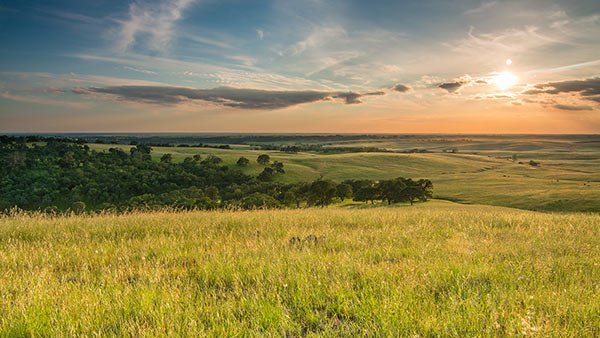(单词翻译:单击)
听力文本
A two-foot-long tongue covered in microscopic hooks,
六十厘米长的舌头上面布满极小的钩子,
followed by claws longer than those of a velociraptor.
加之比迅猛龙还要长的爪子。
A giant anteater on the plains of South America.
这是一只生活在南美平原上的大食蚁兽。
It can devour 20,000 insects a day.
它每天可以吞食两万只昆虫。
Powerful forelegs enable it to rip apart a termite hill with ease.
有力的前肢让它们能够轻易地掰开白蚁巢。
And as the sun bakes the grass, the termites face new danger.
太阳炙烤草原,白蚁面临着新的危险,
In minutes, fire turns grassland to ash.
几分钟内,大火就将草原化为灰烬。

But the grasses are not dead. Their underground stems are unharmed.
但是草不会被大火烧尽。它们的地下茎完好无损。
Weeks, months may pass,
数周、数月就这么过去了,
but eventually the rains will return and the grass will sprout again.
但是雨季终将来临,青草又会重新发芽。
Some grasslands must endure not only fire, but ice.
一些草原不仅要忍受火的炙烤,还有冰霜。
As winter approaches, the prairies of North America begin to freeze.
冬季来临,北美的草原开始霜冻。
视频及简介
草原覆盖了所有土地的四分之一,支持着野生动物的大量聚集,但为了在这里生存,动物必须忍受地球上最恶劣的季节性变化。从亚洲怪异的西贡羚羊,到巴西的巨型食肉动物,草原动物已经以不同寻常的方式适应了这些极端。在被洪水淹没的奥卡万戈,狮子在史诗般的战斗中,在大草原上捕食一头令人生畏的水牛,捕食者利用大象来帮助捕捉昆虫,在寒冷的北部苔原上,驯鹿开始在饥饿的北极狼的阴影下进行大迁徙。


